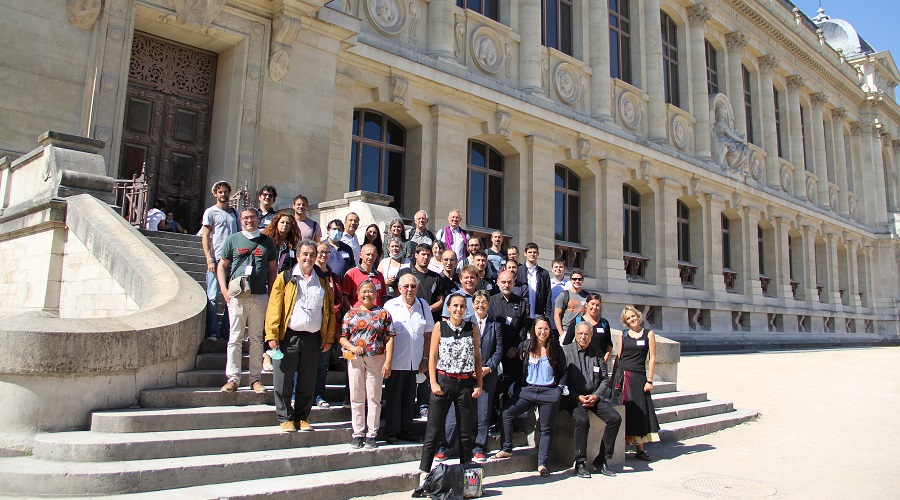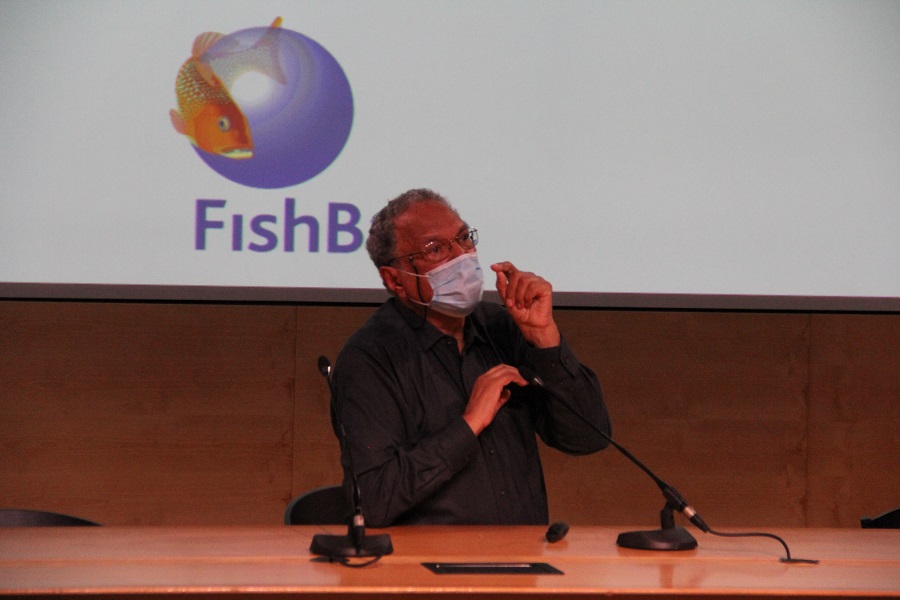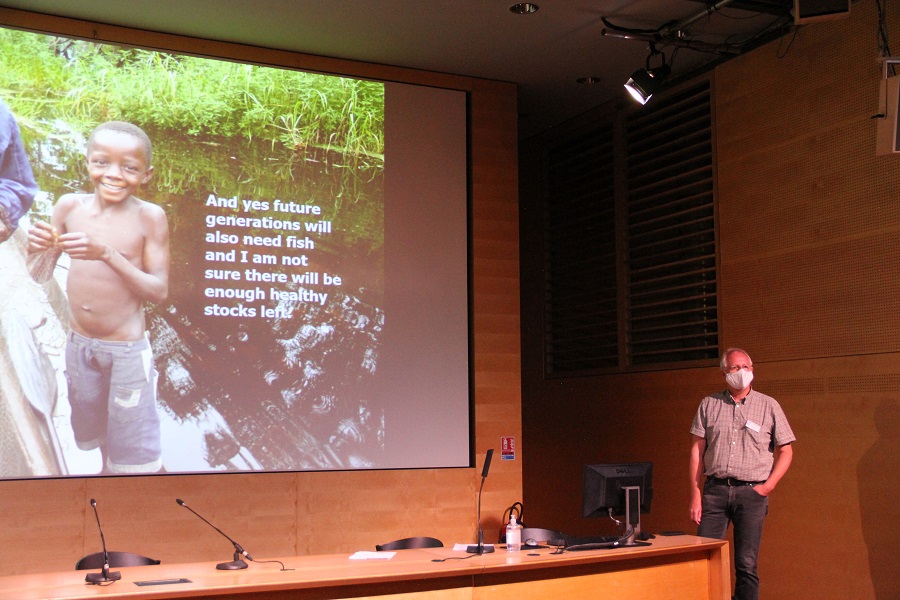
The always buzzing Paris – which did its best to exhibit its usual accelerated rhythm even in pandemic times -, hosted on September 6-7, 2021, an equally dynamic FishBase and SeaLifeBase Symposium at the Grande Galerie de l’Évolution of the National Museum of Natural History.
One presentation after the next, about 100 attendees – half in-person, half online – were able to get a good grasp of the many ways FishBase and SeaLifeBase are used across disciplines and areas of interest, what is being done to improve certain database functionalities and what can be done to increase their interconnectedness with other biodiversity information systems.
From the start of day one, presenters also put the spotlight – in one way or another – on the team in the Philippines that, even if behind the scenes, makes the existence of FishBase and SeaLifeBase a reality.
An introductory video organized by the Sea Around Us’ project manager, Deng Palomares, and put together by Aque Atanacio and which allowed attendees to put a face behind the address they just sent an email to or the table they just downloaded, set the tone to one of gratitude towards those who have dedicated three decades of their lives to conceptualizing, feeding, maintaining and updating these invaluable resources.
On the first session of day one, the Sea Around Us’ principal investigator and FishBase co-creator, Daniel Pauly, opened the forum by presenting some information on an upcoming paper titled “Why do fish reach first maturity when they do?”
Building on his Gill Oxygen Limitation Theory and information on maturity available on FishBase, Pauly asks why fully formed young fish do not respond to the environmental stimuli that the adults react to by maturing and spawning. He then proposed that the response to this question lies in the fact that during the juvenile-to-adult transition, respiratory stress hits a threshold due to oxygen supply through the gills not keeping up with the oxygen demand of the body.

Next, Jessica Meeuwig, director of the Marine Futures Lab at the University of Western Australia, presented the BRUVS Tool that was recently integrated into FishBase.
BRUVS, which stands for ‘baited remote underwater video systems’ and Meeuwig made the case for the use of these non-lethal tools to document the status of marine wildlife and generate data that can provide benchmarks to address challenges related to ocean management, including documenting outcomes of large marine protected areas.
The BRUVS tool on FishBase, thus, is set to provide these data in an open-access environment.
Rainer Froese followed with a presentation based on his work with Rodolfo Reyes and Angelica Parducho on methods for combining new data with existing or prior knowledge available on FishBase -such as length-weight relationships- in applied analyses such as assessments of population biomass, growth and mortality.
Jos Snoeks continued with a presentation on African freshwater fish diversity and human utilization.
Snoeks pointed out that the FishBase-for-Africa program of the Royal Museum of Central Africa is the largest initiative to make published information on African fishes publicly available, which goes hand in hand with a long-time collaborative effort to assess the IUCN red list status of the African fresh and brackish water fishes. Currently, more than a quarter of those fishes for which enough data are available, are considered to be threatened.

Presentations that followed ranged from the history of computerization of fish collections, ecocentric fisheries management in Europe, a FishBase mobile app to reach new users, the role FishBase and SeaLifeBase plays and can play in public aquaria and deepening the integration of both information systems with other databases such as WoRMS and Catalogue of Fishes.
The Symposium closed with a flourish with a presentation by Austin Humphries from the University of Rhode Island – and the newest member of the FishBase Consortium -, who measured the scientific impact of FishBase via a citation analysis using SCOPUS and found that FishBase usage is concentrated in the global North, with Brazil being a big exception from the South, and that it has increased linearly through time.
Videos from the Symposium’s presentations are available below. Click on the “next” arrow to move from one presentation to the next.

